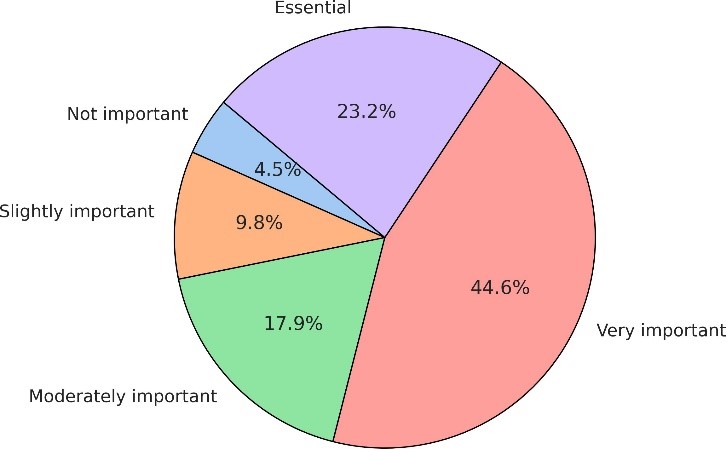Economic Contributions of Tribal Markets in Nagaland: A Kohima-Centric Study
DOI:
https://doi.org/10.71113/JCSIS.v2i7.388Keywords:
Indigenous livelihoods, informal economy, Northeast India, ordinal regression, income generation, Tribal marketsAbstract
Tribal markets in Nagaland are crucial elements of the region's socio-economic structure, especially in Kohima, where these markets offer substantial chances for income generation, informal employment and livelihoods diversification. This research studies economic impacts of these markets by collecting primary data from 112 participants by using the structured questionnaires. The analysis of the data was carried out using descriptive statistics, Chi-square tests, and ordinal logistic regression. The findings indicate that many vendors depend on these markets as either a main or additional source of income, with significant correlations between income levels and factors such as the type of products sold, gender of the vendors, and the frequency of market participation. Increased income outcomes were associated with regular engagement and sale of value-added products. Whereas they play a role in community sustainability, tribal markets face ongoing issues such as the insufficient infrastructure, restricted access to finance, and lack of formal policy recognition. The findings emphasize the importance of integrating informal economies into urban planning and financial inclusion efforts, providing specific empirical insights from Kohima to the broader academic discourse. This study advocates for the creation of inclusive policy frameworks that will recognize and enhance the role of tribal markets in supporting regional development.
Downloads
References
Adhikari, B., & Bhattarai, S. (2019). Non-timber forest products and their contribution to health-care and livelihood security among the Karbi tribe in Northeast India. Ecological Processes, 8 (1), Article 19. https://doi.org/10.1186/s13717-019-0194-4
Arnold, J. E. M., & P´erez, M. R. (2001). Can non-timber forest products solve livelihood problems?A case study from Periyar Tiger Reserve, India. Oryx, 35 (3), 229–236. https://doi.org/10. 1017/S0030605301000390
Behera, H. C. (2024). Weekly market in tribal areas and the new economic frontier. Sampratyaya Journal. Retrieved from https://sampratyayajournal.com/weekly-market-tribal-nagaland
Darnal, D., & Dutta, A. (2024). An empirical analysis of tribal investors’ behavior: A study of selected states in North-East India. International Research Journal on Advanced Engineering and Management, 2 (3), 192–197. https://doi.org/10.47392/IRJAEM.2024.0030
Dash, M., Behera, B., & Rahut, D. B. (2016). Determinants of household collection of non-timber forest products (NTFPs) and alternative livelihood activities in Similipal Tiger Reserve, India. Forest Policy and Economics, 73, 215–228. https://doi.org/10.1016/j.forpol.2016.09.012
Faishal, M. (2025). The role of digital financial inclusion in microenterprise growth: Evidence from Kohima, Nagaland. South Asian Journal of Social Studies and Economics, 22 (7), 135–143. https://doi.org/10.9734/sajsse/2025/v22i71068
Gubbi, S., & MacMillan, D. C. (2008). Can non-timber forest products solve livelihood problems?A case study from Periyar Tiger Reserve, India. Oryx, 42 (2), 150–162. https://doi.org/10. 1017/S0030605308071111
Inahoto, B., & Faishal, M. (2025). An empirical study on educational development and gaps in Satakha Town, Nagaland. World Journal of Advanced Research and Reviews, 26 (2), 3736–3743. https://doi.org/10.30574/wjarr.2025.26.2.1992
Kar, A., & van Niekerk, R. (2022). Marketing constraints of non-timber forest products: Evidence from Jharkhand, India. In Constraints to NTFP Marketing in India (pp. 145–160). Springer. https://doi.org/10.1007/978-981-19-6454-1_11
Konyak, S. K., & Faishal, M. (2025). Navigating mobility and livelihoods: An empirical study of two-wheeler taxi services in Mon Town, Nagaland, India. Asian Journal of Economics, Business and Accounting, 25 (6), 226–234. https://doi.org/10.9734/ajeba/2025/v25i61848
Mahato, S., & Syngkon, R. A. (2021). Importance of non-timber forest products (NTFPs) in rural livelihood: A study in Patharia Hills Reserve Forest, Northeast India. Trees, Forests and People, 3, 100042. https://doi.org/10.1016/j.tfp.2020.100042
Murphy, R. L. (2022). From within and without: Gender, agency and sustainable management of non-timber forest products in two Indian states. Small-scale Forestry. https://doi.org/10.1007/s11842-022-09531-x
Nadkarni, M. (2017). Non-timber forest products and small-town economies. In E. Denis & M.- H.Z´erah (Eds.), Subaltern Urbanisation in India: Exploring Urban Change in South Asia (pp. 353–366). Springer. https://doi.org/10.1007/978-81-322-3616-0_23
Pandey, A. K., Tripathi, Y. C., & Kumar, A. (2016). Non-timber forest products (NTFPs) for sustained livelihood: Challenges and strategies. Research Journal of Forestry, 10 (1), 1–7. https://doi.org/10.3923/rjf.2016.1.7
Pande, D. K., De, H. K., Phukan, B. R., Mehra, T. S., Mishra, B. P., Chanu, T. M., & Tomar, K. S. (2018). Information, credit and market access by upland tribals in north-eastern Himalaya of India: An empirical study. Indian Journal of Agricultural Sciences, 88 (12), 1897–1902. https://doi.org/10.56093/ijas.v88i12.85443
Paphino, D., & Faishal, M. (2025). An empirical study on sustainable style and financial sense among thrift shoppers in Kohima. IOSR Journal of Economics and Finance, 16 (3), 60–67. https://doi.org/10.9790/5933-1603036067
Shaanker, R. U., Ganeshaiah, K. N., Krishnan, S., et al. (2004). Livelihood gains and ecological costs of non-timber forest product dependence in South India. Environmental Conservation, 31 (3), 242–252. https://doi.org/10.1017/S0376892904001596
Shackleton, C. M., & Pandey, A. K. (2014). Positioning non-timber forest products on the development agenda. Forest Policy and Economics, 38, 1–10. https://doi.org/10.1016/j.forpol. 2013.07.004
Singh, S. (2024). An overview of socio-economic issues and challenges of tribal development in India. Research Communications, 2 (1), 55–61.
Tase, V., & Faishal, M. (2025). Seasonal income sustainability of private water suppliers in Kohima Town, Nagaland. Journal of Economics, Management and Trade, 31 (7), 85–95. https://doi.org/10.9734/jemt/2025/v31i71313
Tewari, D. D. (2014). Is big business approach to managing non-timber forest products (NTFPs) benign? Journal of Human Ecology, 47 (1), 87–102. https://doi.org/10.1080/09709274.2014. 11906741
Thapa, A., & Singh, K. (2023). Livelihood and socio-economic challenges in medicinal and non-timber forest product management in India: A review. Journal of Non-Timber Forest Products, 50 (9), 1–16. https://doi.org/10.55463/issn.1674-2974.50.9.9
Tribal Cooperative Marketing Federation of India Ltd. (n.d.). History and mandate of TRIFED. Wikipedia. Retrieved March 29, 2019, from https://en.wikipedia.org/wiki/Tribal_Co-operative_Marketing_Federation_of_India
Verma, S., & Sharma, R. (2023). Informal mobility solutions and digital economy integration in tribal markets. Indian Journal of Development Economics, 18 (2), 145–160. https://doi.org/10.32345/ijde.v18i2.987
Yadav, M., & Dugaya, D. (2013). Non-timber forest products certification in India: Opportunities and challenges. Environment, Development and Sustainability, 15 (3), 567–586. https://doi.org/10.1007/s10668-012-9393-1

Downloads
Published
How to Cite
Issue
Section
License
Copyright (c) 2025 Dr Riweu Kenye, Dr Mohd Faishal

This work is licensed under a Creative Commons Attribution 4.0 International License.






















